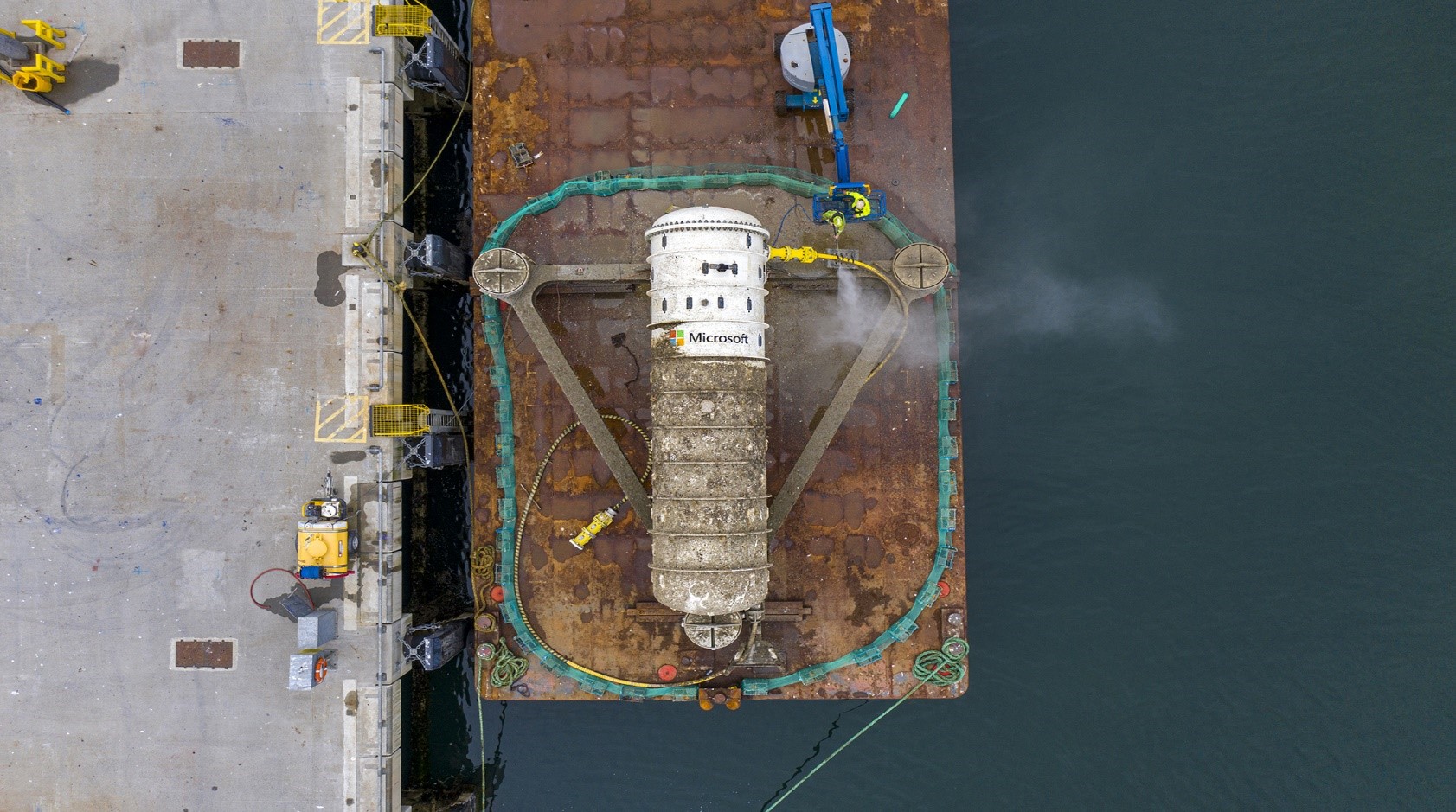A datacenter is a specially designed structure that is created for the purposes such as: collecting, processing, distributing or allowing the access to large amounts of data.
A datacenter is an essential part to IT’s operations in any organization. It's used to store and organize most critical and propriety assets in enterprises, this makes it of utmost importance for the continuity of operations that take place on daily basis.
A datacenter is referred to as a single object, however, it includes storage systems, routers, switches, firewalls, servers, and application-delivery controllers as its key components.
Microsoft’s Project Natick:
In the spring of 2018, Microsoft announced the deployment of its Northern Isles underwater datacenter. This datacenter is a part of their so called Project Natick.
The idea of the underwater datacenter was first proposed during Microsoft’s ThinkWeek in 2014. And in 2015, through a 105-day experimental deployment in the Pacific Ocean, Microsoft was able to prove that the underwater datacenters idea was actually attainable.
The cylinder was built in France by a shipbuilding company and when it came to renewable energy, the European Marine Energy Center (EMEC) provided the needed help. The presence of EMEC was one of the factors that made Microsoft choose this location. “We’ve got so much renewable energy here” Neil Kermode, a managing director at EMEC, said. “We’ve produced more than we need since 2012,” he added. Orkney was chosen because it is a major center for renewable energy research. And the area of the Orkney Island is covered by 100% renewable grid supplied by both wind and solar.
The project Natick’s team deployed the Northern Isles datacenter 117 ft. deep into the seabed in the spring of 2018. And throughout the following two years, they tested and monitored the performance and reliability of the datacenter’s servers.
The main theory behind this project was that the cooling costs of computers will be cut down when being placed underwater, “we think we actually get much better cooling underwater than on land,” Ben Cutler, a project manager in Microsoft’s special projects research group who leads Project Natick, said. “Additionally, because there are no people, we can take all the oxygen and most of the water vapor out of the atmosphere which reduces corrosion, which is a significant problem in datacenters,” he added.
The cable that brings power to the data center is what is also used to take its data to the shore and to the wider internet –but there's a risk that if any of the computers on board breaks, it cannot be repaired. However, the team had a hope that with being underwater, datacenters had a lower failure rate than on land.
The datacenter was built to stay for up to five years on the seafloor, but early this year, and after almost two years, Microsoft pulled it out and studied it. The results didn't only prove that these underwater datacenters seem to work well in terms of performance, but it also was able to show that the servers contained inside the datacenter are up to eight times more reliable than their dry-land counterparts.
Datacenters are designed due to the need for collecting, processing, and distributing of large amounts of data in short periods of time. A datacenter is a used to store computer systems, networking equipment, and power supplies and subsystems electrical switches. Any organization usually has its datacenter in the same building and organizations who do not have their own, sometimes, rent servers or use cloud-based services at hosts. In 2014, Microsoft had an idea that storing datacenters underwater is actually an achievable idea. They, then, deployed North Isles of Project Natick datacenter. And in 2020 they pulled the datacenter form under the water to study it and it was proved that the underwater datacenters are better than their on-land counterparts.






